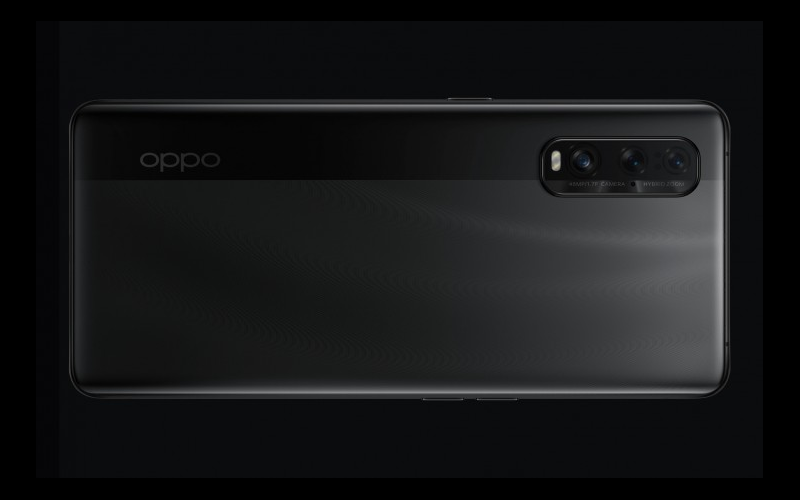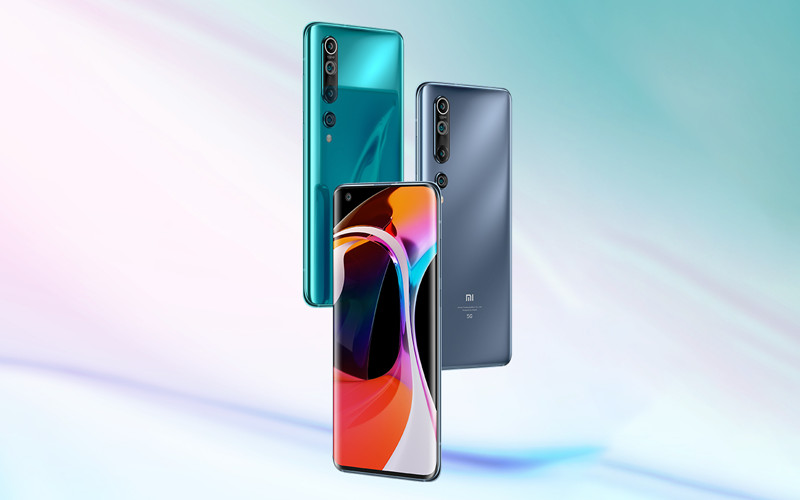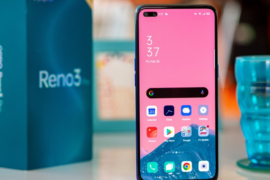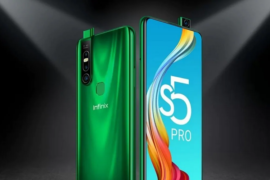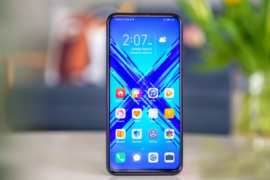SPECIFICATIONS
- Display6.7 inches
- Rear Camera48 MP/13MP/12MP
- Front Camera32 MP
- ProcessorQualcomm Snapdragon 865
- Resolution1440 x 3168
- RAM8GB/12GB
- Operating SystemAndroid 10
- Storage128GB/256GB
- Battery4200 mAh
- WaterproofYes
- Dual SimYes
- Quick ChargingYes
DESIGN
The Find X2 doesn’t actually have a champion plan in that it’s a genuinely standard premium handset that clings to the patterns of the time. In any case, that is simply to kick us off here.
It has a couple of inconspicuous contacts of its own like the herringbone design on the back board that is likewise one of those consistently changing angles that can be difficult to put a name on. All things considered, our own is called Ocean, which is about right.
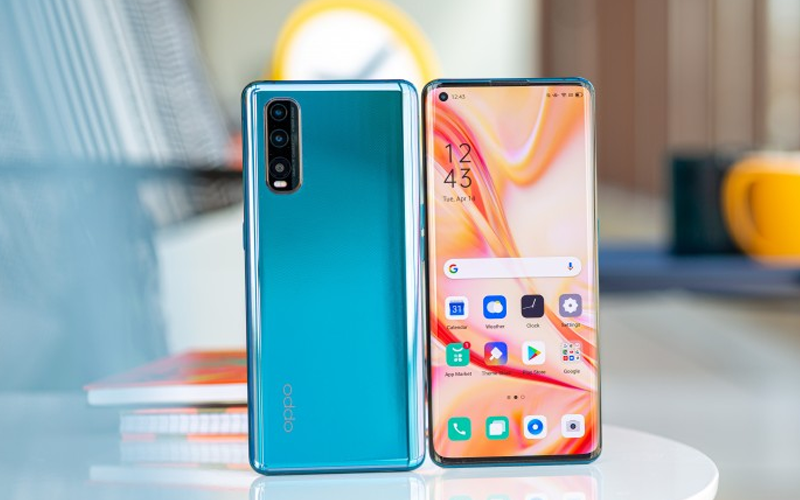
There’s just a solitary other shading alternative, and that one is Black. It’s the shading that is extraordinary, yet additionally the material – the Black’s backboard is fired, instead of the glass one of the Ocean. The clay has a two-tone impact with a fine example for some ¾ of the back and a smooth 1/4, the outskirt between them lined up with the spec strip in the camera bunch.
There’s no Vegan Leather variation like the one you’d find on the Pro model, however on the other hand you can’t have the Pro with a glass back, so here’s a single direction in which the vanilla X2’s Ocean is elite.
Since we’re on the subject of correlations, the Find X2 in glass trim we have here is substantially more slender than our Vegan Leather Find X2 Pro – the 1.5mm contrast somewhere in the range of 8mm and 9.5mm is effectively felt. On the other hand, the artistic Pro is more slender at 8.8, so it’ll be to a lesser extent a thought. The impression is virtually indistinguishable on the two.
The weight is extraordinary, and after a slip up on Oppo’s part with the numbers declared at dispatch, it’s chosen a 192g for a glass Find X2 and 209g for a clay one, instead of 200g for a cowhide X2 Pro and 217g for a fired one. None of them is truly light, however the Ocean Find X2 is the lightest of the bundle, for what that is worth. It’s reasonable, yet in the event that you have a gentler pinky and will in general hold your telephone laying on it for extended lengths of time, you can anticipate some torment. Similarly as with all telephones of this size, truly.
Tragically, one component the Find X2 Pro has, yet the non-Pro doesn’t get is the IP68 rating. The lesser telephone is just IP54 appraised, which means it might get some residue inside, yet it won’t influence its exhibition, while water obstruction is restricted to sprinkles – so light downpour is likely fine, submersion – unquestionably not.
Master or not, the Find X2 has an aluminum outline in a shading to coordinate its back board. On its correct side is the force button with a mark green complement inside it – all colorways have it. The volume catches, separate ones, are straightforwardly inverse, on the left side. Every one of the three equipment controls are metal too, they’re all around situated and measured, and click pleasantly.
Down on the base is the place Oppo set the SIM card opening and it’s SIM-just – it will take a few nanoSIMs, however no microSD. Directly close to it is the essential mic pinhole in a decently tricky situation for being jabbed with a SIM launch device. Normally, the pinhole is only the gulf, however, while the real mic is at an edge, so it ought to be protected, possibly.
The USB-C port is in the delicately curved base, while the essential amplifier is behind a three-opening grille to one side. There’s another mic on the highest point of the telephone and there’s nothing more to it.
By and large, we’re preferring the structure of the Oppo Find X2. The selection of materials and completions causes for an exceptional look and to feel and the controls are useful. The weight is there, yet it’s a piece of the tradeoff for having a major showcase and a huge limit battery. On the off chance that just Oppo had put forth the attempt for an IP68 rating.
DISPLAY
The Oppo Find X2 is furnished with a similar presentation as the X2 Pro – a 6.7-inch AMOLED with a 1440x3168px goals in a 19.8:9 perspective proportion. It’s likewise equipped for a 120Hz revive rate and not at all like the Galaxies of the day you can set both the goals and the invigorate rate at the most noteworthy settings simultaneously.
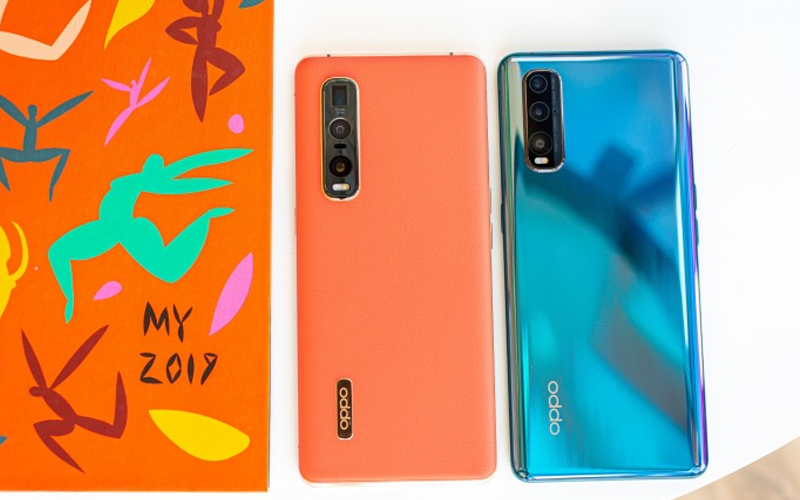
We estimated a most extreme brilliance of 850nits in splendid surrounding light conditions in auto mode and an estimation of 518nits while changing the slider physically. Both of these are somewhat lower than what we estimated on the Find X2 Pro, yet at the same time appropriately magnificent numbers well deserving of a current very good quality gadget. As we’ve seen on different handsets, the Find X2 Pro included, the Find X2 will give its showcase a lift in especially splendid outside conditions regardless of whether the auto switch is separated, which we do appreciate.
The Find X2’s shading settings can have you somewhat mistook from the outset for both the Vivid and Cinematic alternatives referencing the DCI-P3 shading space. Oppo guarantees the showcase covers 100% of it and does as such with close to flawless exactness.
In Vivid mode we estimated a normal deltaE of 4.4 and a limit of 9.1 for DCI-P3 focuses with the white point being perceptibly moved towards blue (deltaE around 8).
Artistic got us a normal of 2.2 and a limit of 3.7 while looking at DCI-P3 test samples, somewhat off from the excessively precise 0.7/1.3 qualities we jumped on the Find X2 Pro in this mode. This made us think and we retested the X2 Pro, presently getting fundamentally the same as results as the ones from the Find X2. Our best supposition is a product update switched things up a piece. All things considered, a normal deltaE of 2.2 is a moderately very much adjusted showcase. Psyche you, the 3 essential hues (RGB) and the midpoints between them (CMY) are still inside a 0.5 deltaE on the two telephones – basically spot-on.
Delicate mode is tuned for sRGB multiplication and we estimated a normal deltaE of 2.2 for the individual test patterns. Normally, it accompanies an emotionally dull version.
The showcase on the Oppo Find X2 is a HDR10+ consistent, which means it has all around to do with Samsung, the organization behind the norm. Discovering HDR10+ content on standard channels isn’t the most straightforward assignment, with just Amazon Prime Video offering it. HDR10, then again is broadly accessible and the Find X2 plays such recordings from YouTube.
We had an unusual involvement in Netflix, in any case. It records HDR appears as HDR, yet in the playback particular page of the application it says the telephone has no HDR ability and is restricted to standard definition. The Netflix site records the Find X2 as an upheld gadget (three forms of it, our own included), yet that isn’t the situation with our survey unit. DRM information indicates a Widevine Security level L3, while Netflix requires the most noteworthy L1, and it’s a prime suspect for what’s the reason for the issue, however we have no clarification with respect to why our unit isn’t L1, which it ought to be. We experienced no such difficulty with our Find X2 Pro audit unit.
PERFORMANCE
The Find X2 has the Snapdragon 865 chipset at its heart, just like the standard in the top of the line section this year – you’d locate Qualcomm’s top-level SoC in each Android lead that isn’t a Huawei or a Galaxy, yet in addition in a ton of Galaxies too. The telephone can be had in one of three RAM and capacity designs, however not every one of them is accessible all over the place – 8GB/128GB, 8GB/256GB, and 12GB/256GB (or survey unit). Smash is LPDDR5 while the capacity is UFS 3.0.
We didn’t get any genuine amazements subsequent to running our standard benchmark suite. Snapdragon gadgets are generally firmly pressed for the current year over all heap situations, the Exynos controlled Galaxies are for the most part keeping up and it’s just the Kirin 990-prepared Huawei P40 Pro that is trailing by a bit.
The Find X2 kept its cool after rehashed benchmark runs and had next to zero drop in scores either. That is a similar conduct we saw on the Pro, so plainly Oppo has thought of a thermally proficient arrangement this year. The emotional experience we had was correspondingly positive and the telephone breezes easily through whatever task you toss at it.
BATTERY
The Oppo Find X2 is controlled by a 4,200mAh battery – an immaterial downsize when contrasted with the Pro. Contenders like the Galaxy S20+ and the Xiaomi Mi 10 Pro have 4,500mAh each while the Huawei P40 Pro has a similar limit power pack as the Oppo. 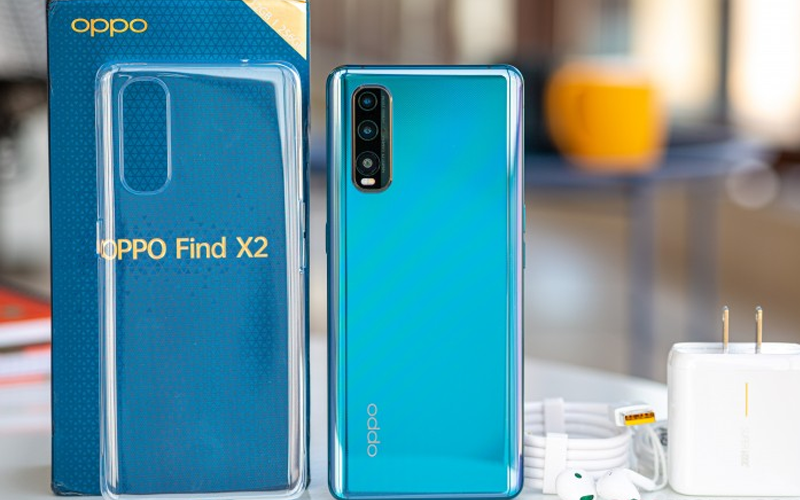
In our testing, with the presentation choices set at the greatest qualities (120Hz invigorate rate, 1440p goals), the Find X2 posted a disappointing outcome in web perusing (8:49), yet a fantastic video playback perseverance (16:07). The discussion time was an alright yet not incredible 23 hours and combined with an also meh reserve result, the Find X2 showed up at generally speaking Endurance rating of 80h.
We happened to have a few additional days in our survey timetable to test each of the four potential combos of goals and show invigorate rate (don’t become acclimated to it) and we’ve masterminded the outcomes in this here table. Since talk time and reserve life span isn’t influenced by those, we’ve discarded them for lucidity.
As should be obvious, dropping the casing rate to 60Hz while keeping the 1440p goals acquires a huge improvement web perusing (however the 10:35h is certifiably not an extraordinary outcome still) and has practically no impact on video playback. On the other hand, keeping the 120Hz yet dropping the goals to 1080p scarcely pushes the web perusing time (barely short of 3% improvement) and has a somewhat progressively articulated positive effect on video playback (which was at that point incredible). Typically, the 60Hz/1080p mode is the least burdening on the battery.
Looking at the Find X2’s outcome in the 120Hz/1080p mode to the Galaxy S20+ with similar settings, the Oppo conveys a decent 4 hours a greater amount of circling recordings, however the S20+ outlives it by 2 hours in Wi-Fi web perusing. With both set to 60Hz/1440p, the Galaxy takes a negligible lead in video and holds a preferred position in web perusing.
It has been our experience that 90Hz showcases put next to zero strain on batteries when contrasted with 60Hz, or possibly 90Hz-proficient boards don’t profit monstrously from being run at 60Hz. Regardless, both the Huawei P40 Pro and the Xiaomi Mi 10 Pro 5G brag preferable life span over the Find X2, basically paying little heed to what show mode you set on the Oppo.
The Find X2’s packaged charger helps alleviate those unremarkable program times. The 65W block best up the telephone’s battery quickly, similarly as Oppo guarantees. 30 minutes into the procedure you’d be taking a gander at 94%. To accomplish these paces, you need both the restrictive charger and link – with standard QuickCharge or USB PowerDelivery peripherals you can expect up to 18W charging.
CAMERA
The pictures out of the Oppo Find X2’s primary camera are sharp and catch great detail for their 12MP goals. The commotion execution isn’t incredible, in any case, with more grain than we’re accustomed to seeing, surely a lot for a top-level gadget.
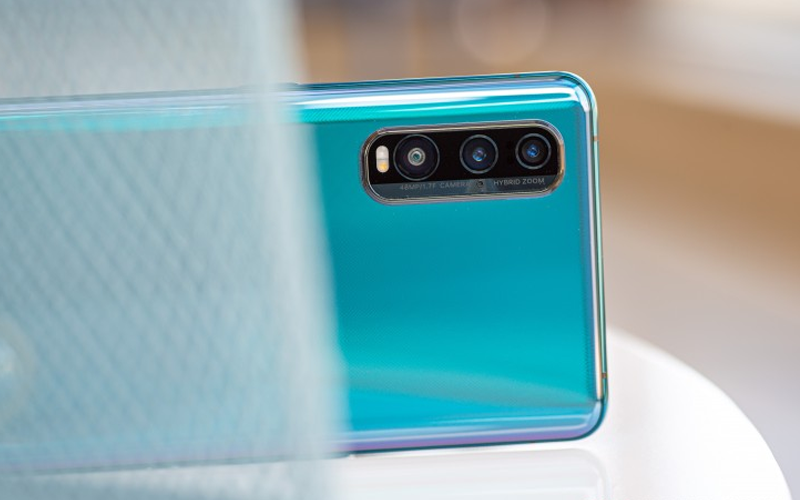
The Find X2 settles on a contrasty look with some profound shadows left without much HDR treatment, and we do figure it could uncover perhaps a large portion of a stop more brilliant. All things being equal, unique range is acceptable. We do welcome the Find X2’s shading interpretation with pleasantly lavish greens and profound reds – not over the top, however not dull either.
You don’t remain to receive a great deal of rewards If you change to the 48MP mode. You’d get a smaller unique range and a climb in clamor, yet in addition some genuinely articulated associating. We would straight-up keep away from it.
The ultra wide edge cam of the Find X2 ups the immersion a piece and accompanies somewhat more restricted powerful range than the principle cam, which really implies it has an entirely wide unique range as ultra wides go. It additionally conveys great sharpness and detail, again for an ultra wide cam.
Perhaps the best component is the self-adjust capacity – an expanding number of ultra wide cams currently offer it, yet it’s as yet not guaranteed. This lets you draw near to subjects and do overstated point of view shots just as close-ups.
The Find X2’s ultra wide cam has its eccentricities however. One of them is its traditionalist way to deal with HDR which won’t really draw in at of the occasions you need it. Here’s one scene which benefits monstrously from it, however we needed to constrain it on.
The one explicit attribute of the Find X2’s ultra wide you may have gotten as of now – it’s not too ultra wide. Ok, yet it is, just the sensor’s local viewpoint proportion is 16:9 and in the default 4:3 modes you’re getting a yield from it with the sides being lost. We previously fumed how the distinctive angle proportion circumstance could have been taken care of better, yet here’s a correlation of the inclusion you’d get in 16:9 on the off chance that you go to the difficulty of exchanging to and fro between viewpoints.
The standard issue 2x cam of the Find X2 goes after its ostensible zoom level. Commotion is genuinely high by and by, so it’s even more a pattern with the Find X2 handling than it is a characteristic of this specific camera. Hues are more quieted here than on the other two, and dynamic range is smaller too.
In low light, the Find X2’s AI calculations apply some calm Night mode activity in Photo mode too. You get a spring up in the viewfinder that serves to alarm you of what’s happening, but on the other hand it’s a catch giving you the alternative to withdraw it. We should keep it on for the time being, see where that gets us.
All things considered, it gets us Night mode shots, fundamentally. It takes a couple of moments for a shot to finish and the outcomes have the very much evolved shadows, contained features and in general wide powerful scope of a Night mode photograph. Detail is entirely acceptable as well, it’s simply that we don’t know about the white offset with warm city lights – there’s a solid orange vibe going on in such scenes.
Proceeding onward to real Night mode, and shock – the photographs are about indistinguishable from the Photo mode ones with the AI Night on. The EXIF information on these reports longer screen speeds and that was additionally our experience when shooting them, however the thing that matters was little and positively immaterial contrasted with the one between the catch times of Night mode and plain Photo mode above – those last ones are basically moment.
The ultra wide edge cam of the Find X2 puts out a genuinely average presentation in low light. It also embraces the half and half night mode approach and will get you more brilliant shadows than expected and it’ll reign in the features too – both pleasant thing. It will have a genuinely clear pixelation impact, especially around light sources, however it’s something we can live with for the improved generally presentation you get in plain Photo mode. Shading immersion is very much protected.
The ultra wide edge cam of the Find X2 puts out a genuinely conventional presentation in low light. It also receives the cross breed night mode approach and will get you more splendid shadows than expected and it’ll reign in the features too – both decent thing. It will have a genuinely clear pixelation impact, especially around light sources, yet it’s something we can live with for the improved in general introduction you get in plain Photo mode. Shading immersion is all around saved.
SOFTWARE
A great deal of the key bits are the equivalent between the two – like the 6.7-inch AMOLED show that outspecs basically some other available, the top-class Snapdragon 865 chipset, the bursting quick charging arrangement and the battery (60mAh less, you state? Alright).
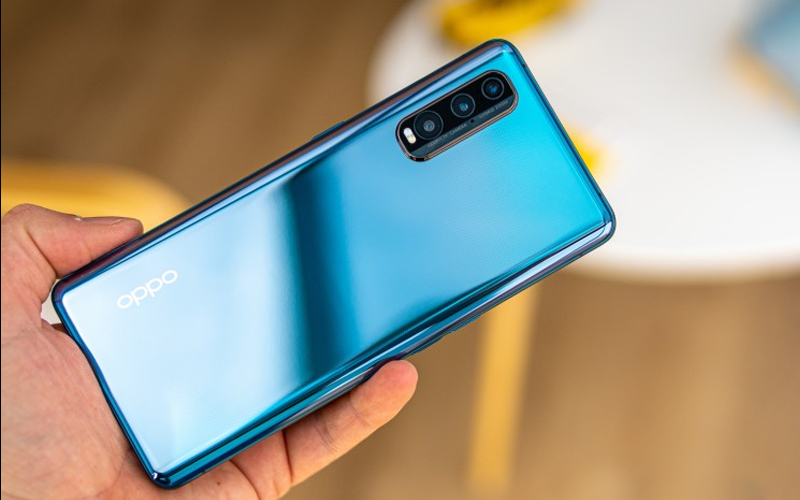
Maybe the one other decently critical downsize is in the IP rating – with IP54 versus IP68 the Find X2 we have here is just secured for sprinkles while the Pro ought to serenely endure a jump. Be that as it may, there’s an overhaul of sorts as well – the non-Pro will spare you some €200, which is an entire extra midranger in that spot. Not that at €1000 the Find X2 is actually modest, obviously. Here’s a brief glance at what that wad of money gets you.
- OS Android 10, ColorOS 7.1
- Chipset Qualcomm SM8250 Snapdragon 865 (7 nm+)
- CPU Octa-center (1×2.84 GHz Kryo 585 and 3×2.42 GHz Kryo 585 and 4×1.8 GHz Kryo 585)
- GPU Adreno 650
Should I Buy It?
It’s essentially difficult to make a terrible Rs. 82500 cell phone, and the Oppo Find X2 is a long way from one. It is, truth be told, a graph topper in key regions like presentation, execution, and battery charging. Be that as it may, with the X2’s lofty estimating and Oppo’s decision not to upset the Pro at the top regarding highlights, the Find X2 winds up too costly to ever be serious. We truly like the Oppo Find X2 in detachment.


